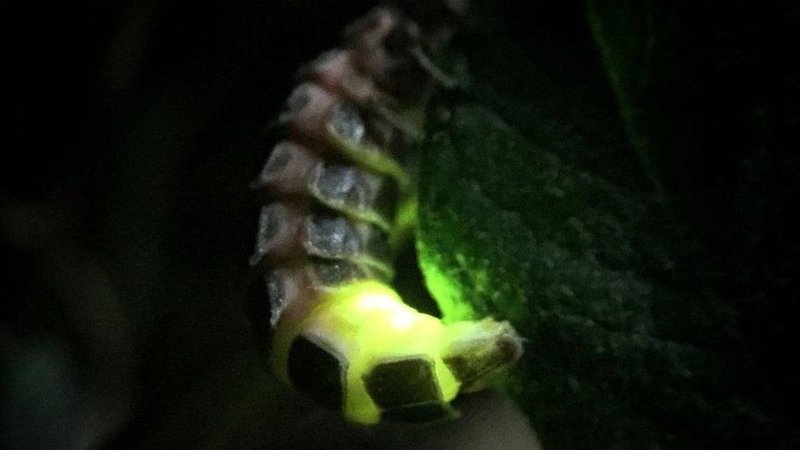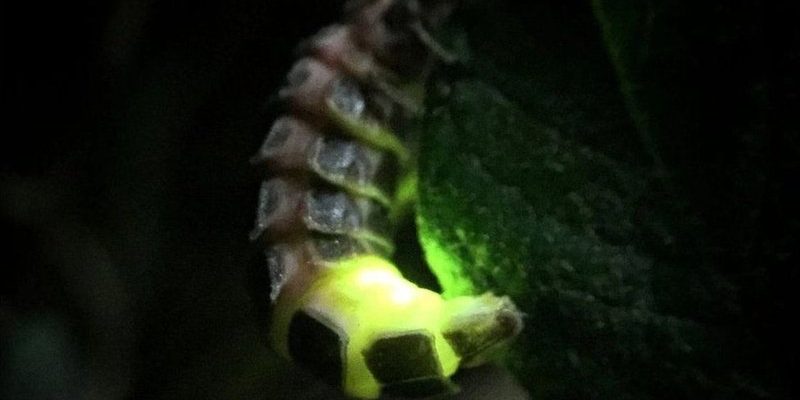
Honestly, it’s easier than you might think. Coexisting with glow worms can enhance the charm of your garden, providing not just beauty, but also a way to support local ecosystems. In this article, I’ll share tips on how to create a welcoming space for glow worms, what they need to thrive, and how to appreciate their unique presence without causing any harm.
Understanding Glow Worms
Glow worms, particularly the species *Lampyris noctiluca*, are often mistaken for fireflies because of their glowing bodies. However, they are actually a type of larva from the beetle family. The light they emit comes from a chemical reaction in their bodies, allowing them to attract prey, usually small insects. Imagine them as tiny lanterns luring in dinner!
These creatures thrive in moist habitats, often found in wooded areas or gardens. They like dark spaces where they can hunt without being disturbed. You might be wondering why you’d want these critters around, and here’s the thing: they play a crucial role in your garden’s ecosystem. By attracting them, you can help control pest populations and create a more balanced environment.
Creating a Friendly Habitat
If you want to attract glow worms, the first step is to create a friendly habitat. These little guys prefer dark, damp areas, so consider planting native plants that provide suitable cover. Here are some tips:
- Plant shrubs and ground cover: Dense vegetation creates the perfect hiding spots.
- Water regularly: Keeping the soil moist is essential for their survival.
- Avoid pesticides: Chemicals can harm glow worms and their food sources.
Incorporating logs or leaf litter can also help create dark microhabitats. This not only supports glow worms but can also attract other beneficial insects and wildlife. Just think of your garden as a vibrant community space where everything plays a role.
What Do Glow Worms Eat?
You might be curious about what keeps these luminescent creatures fed. Glow worms primarily feast on soft-bodied insects, like snails and slugs. They use their light to lure these unsuspecting munchers into their sticky silk threads, much like a spider does.
To support their diet, you can introduce *plant species* that attract those prey insects. For example, plants like mint and basil can draw in small pests. By avoiding insecticides, you ensure that glow worms have plenty of food to thrive on.
Encouraging Glow Worm Sightings
When it comes to enjoying the glow worms in your garden, timing is everything. These creatures are most active at night, so evening strolls can be quite rewarding. Here are some tips for spotting them:
- Turn off outdoor lights: This helps the glow worms stand out against the darkness.
- Walk quietly: Sudden movements can scare them away.
- Be patient: Sometimes, it takes a few minutes for your eyes to adjust to the dark.
You might even consider setting up a cozy seating area outside, perfect for late-night chats under the stars, where glow worms can add a bit of sparkle to your evening.
Protecting Glow Worms in Your Garden
As wonderful as glow worms are, they face threats from habitat loss and pollution. To protect these little lights, consider these actions:
- Limit outdoor lighting: Excessive light pollution can disrupt their mating rituals.
- Practice organic gardening: Avoid synthetic fertilizers and herbicides that can harm their environment.
- Educate others: Share your passion for glow worms and encourage friends to support wildlife.
Each of these steps is a way to foster a healthy environment for glow worms, ensuring that they stick around for years to come.
Common Myths about Glow Worms
There are plenty of myths floating around about glow worms that can lead to misunderstandings. Let me clear up a few:
- Myth: Glow worms are dangerous.
- Fact: They’re harmless and don’t bite or sting.
- Myth: They are larvae of fireflies.
- Fact: They belong to a different beetle family altogether.
By debunking these myths, you can appreciate glow worms for what they are: fascinating creatures that bring magic to your garden.
Living alongside glow worms can truly enhance your garden experience. By understanding their needs and creating a welcoming environment, you’re not just supporting a mesmerizing display—you’re also playing a part in protecting biodiversity. So, next time you see those tiny lights twinkling in your garden, remember the role they play and how you can help them thrive. Embrace the glow, enjoy the beauty, and watch how your garden comes alive at night!

